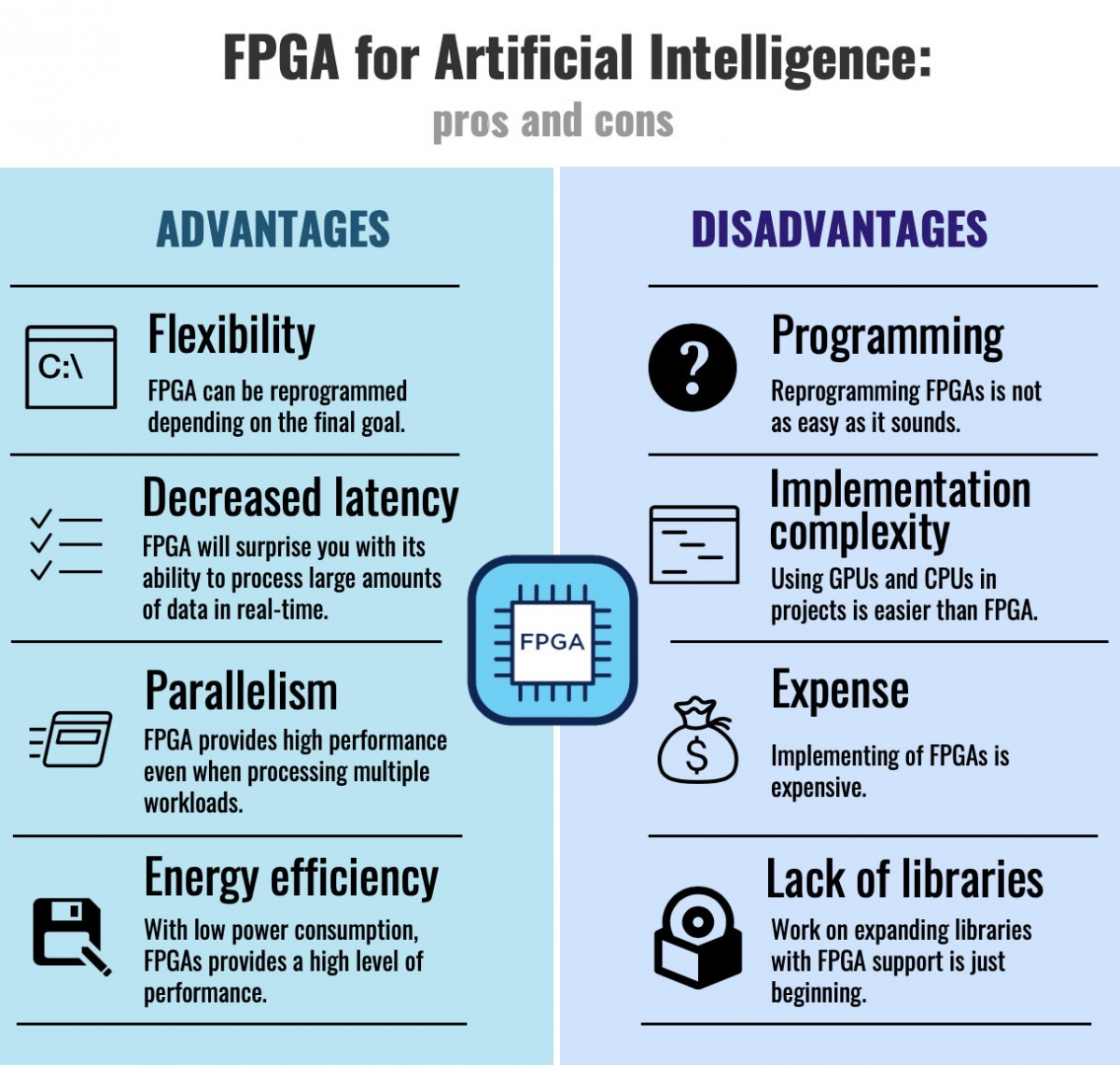FPGA for Artificial Intelligence: pros and cons
Tractica predicts that AI revenue will reach $105.8 billion by 2025. We decided to figure out how using FPGAs will help your project and what losses you will incur.

Advantages of FPGA technology:
- Flexibility. FPGA can be reprogrammed depending on the final goal. For AI, the circuit can be reprogrammed to fulfill the requirements of a particular data processing algorithm.
- Parallelism. FPGA demonstrates impressive application performance even while processing multiple workloads at the same time. Besides, when changing workloads, the FPGA will be able to adapt to them.
- Decreased latency. FPGA will surprise you with its ability to process large amounts of data in real-time due to the high memory bandwidth.
- Energy efficiency. FPGA perfectly solves the problem with the resource-intensive machine and deep learning. With low power consumption, the circuit provides a high level of performance.
Disadvantages of FPGA technology:
- Programming. Due to the lack of experienced programmers, it is not easy to ensure the flexibility of the FPGA that we talked about earlier.
- Implementation complexity. Most companies still use graphics and central processing units (GPUs and CPUs) for AI due to the complexity of implementing FPGAs.
- Expense. Given the above, the cost of implementing FPGAs automatically rises. It is important to estimate the size of your projects – FPGAs will be unreasonably expensive for small-scale ones.
- Lack of libraries. There are currently almost no machine learning libraries that support FPGAs. Nevertheless, work in this direction is already underway.
Thus, FPGAs demonstrate high potential in the field of big data and machine learning. Unfortunately, it will take a long time to reduce the number of shortcomings. Nevertheless, our team has experienced FPGA developers who will be able to assess your chances of success.
Related articles:
FPGA for Artificial Intelligence: predictions, challenges, and solutions
